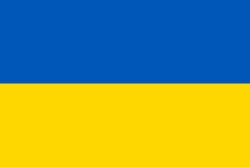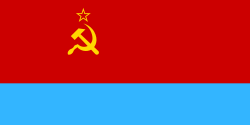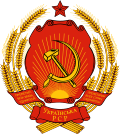This article has multiple issues. Please help improve it or discuss these issues on the talk page . (Learn how and when to remove these messages)
|
Ukraine Україна Ukrayina | |||||||||||||
|---|---|---|---|---|---|---|---|---|---|---|---|---|---|
| 1991–1996 | |||||||||||||
Flag (1992–96): | |||||||||||||
 | |||||||||||||
| Capital and largest city | Kyiv | ||||||||||||
| Common languages | Ukrainian a [1] · Russian [2] | ||||||||||||
| Demonym(s) | Ukrainian | ||||||||||||
| Government | Unitary semi-presidential Transitional government | ||||||||||||
| President | |||||||||||||
• 1991–1994 (first) | Leonid Kravchuk | ||||||||||||
• 1994–1996 (last) | Leonid Kuchma | ||||||||||||
| Prime Minister | |||||||||||||
• 1991–1992 (first) | Vitold Fokin | ||||||||||||
• 1996 (last) | Pavlo Lazarenko | ||||||||||||
| Legislature | Verkhovna Rada [3] | ||||||||||||
| History | |||||||||||||
| 16 June 1990 | |||||||||||||
| 24 August 1991 | |||||||||||||
| 1 December 1991 | |||||||||||||
| 10 December 1991 | |||||||||||||
| 26 December 1991 | |||||||||||||
| 28 June 1996 | |||||||||||||
| Currency | Ukrainian karbovanets | ||||||||||||
| ISO 3166 code | UA | ||||||||||||
| |||||||||||||
| Today part of | Ukraine Russia (disputed) | ||||||||||||
| History of Ukraine |
|---|
 |
| Topics |
| Reference |
The post-Soviet transition in Ukraine was the period following the country's independence in 1991 up until the adoption of its constitution in 1996.



